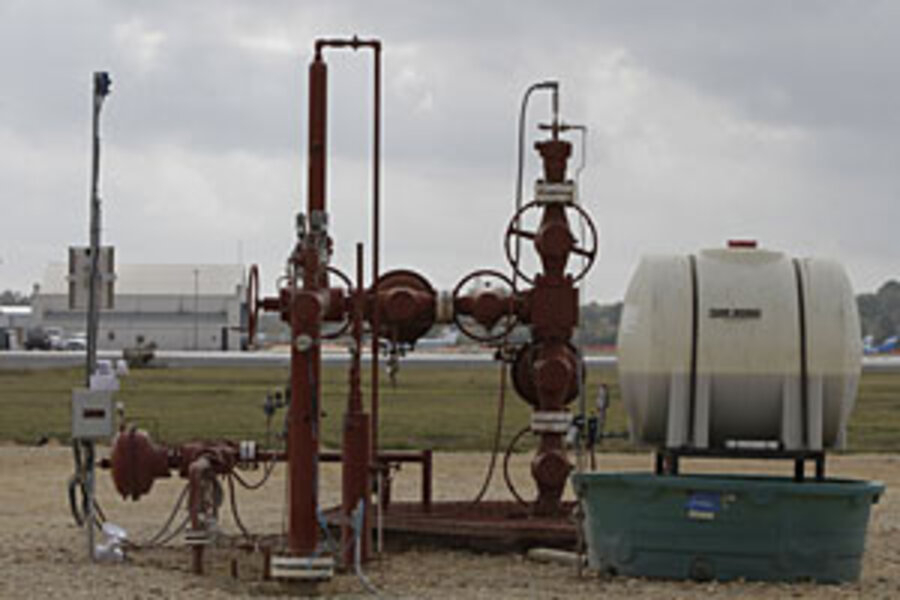The dramatic rise in the amount of retrievable natural gas in the United States could recast the nation's energy profile.
Natural gas is threatening the dominance of coal and undercutting nascent efforts not only to resuscitate nuclear energy but also to establish renewable energy as a viable and economic alternative.
The vast expansion of US natural-gas reserves is due in large measure to the controversial practice of hydraulic fracturing of shale deposits, which critics say contaminates ground water. Natural-gas prices have fallen more than 40 percent in two years, settling below $4 per thousand cubic feet, the US Energy Information Administration reported in September.
As a result, utilities are unfurling plans to build new gas-fired turbine plants nationwide – and others are shelving plans for renewable energy projects and nuclear projects.
Wind power, in particular, has had a hard time competing with electricity produced by burning cheap natural gas. Wind-turbine generating capacity soared through 2009, making the US the largest market for power. Wind power was cheap enough to sell itself on the open energy markets of the Northeast and West Coast, where it competed with natural gas-fired generators and nuclear energy generators.
Now flip that picture, says Matt Kaplan, a senior analyst with IHS Emerging Energy Research in Cambridge, Mass. The first half of 2010 saw a 70 percent drop in new wind-power installations.
Fossil fuels such as coal are on the chopping block, too. "A large-scale switch from coal to natural gas in the US has become possible largely thanks to the major increase in supply from unconventional shale gas," according to a Deutsche Bank analysis last month. "Increasing supply is causing a long term fall in the price of natural gas, making it a far more economic fuel than in the past."
By Mark Clayton, Staff writer





